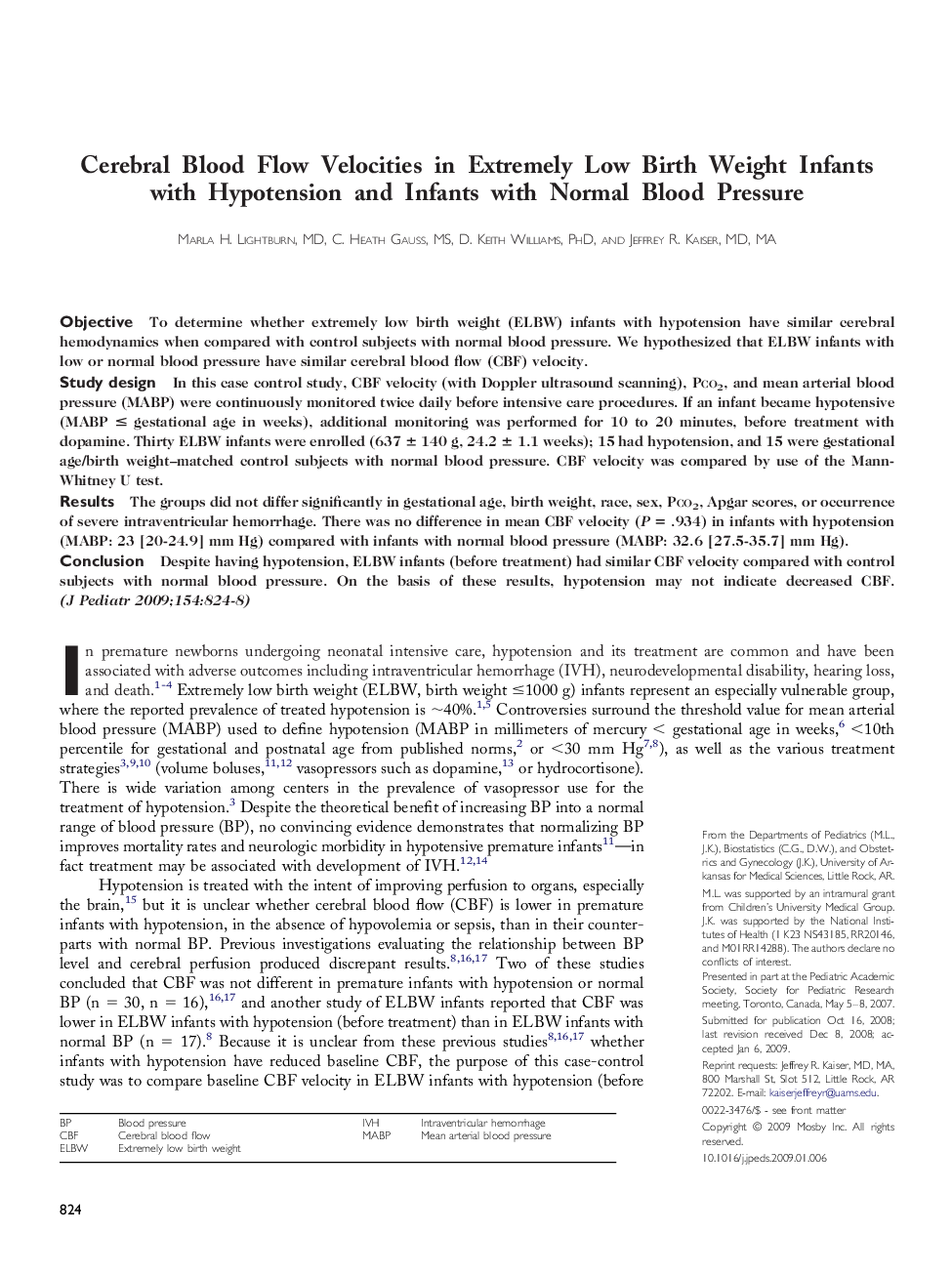| Article ID | Journal | Published Year | Pages | File Type |
|---|---|---|---|---|
| 4166913 | The Journal of Pediatrics | 2009 | 5 Pages |
ObjectiveTo determine whether extremely low birth weight (ELBW) infants with hypotension have similar cerebral hemodynamics when compared with control subjects with normal blood pressure. We hypothesized that ELBW infants with low or normal blood pressure have similar cerebral blood flow (CBF) velocity.Study designIn this case control study, CBF velocity (with Doppler ultrasound scanning), Pco2, and mean arterial blood pressure (MABP) were continuously monitored twice daily before intensive care procedures. If an infant became hypotensive (MABP ≤ gestational age in weeks), additional monitoring was performed for 10 to 20 minutes, before treatment with dopamine. Thirty ELBW infants were enrolled (637 ± 140 g, 24.2 ± 1.1 weeks); 15 had hypotension, and 15 were gestational age/birth weight–matched control subjects with normal blood pressure. CBF velocity was compared by use of the Mann-Whitney U test.ResultsThe groups did not differ significantly in gestational age, birth weight, race, sex, Pco2, Apgar scores, or occurrence of severe intraventricular hemorrhage. There was no difference in mean CBF velocity (P = .934) in infants with hypotension (MABP: 23 [20-24.9] mm Hg) compared with infants with normal blood pressure (MABP: 32.6 [27.5-35.7] mm Hg).ConclusionDespite having hypotension, ELBW infants (before treatment) had similar CBF velocity compared with control subjects with normal blood pressure. On the basis of these results, hypotension may not indicate decreased CBF.
